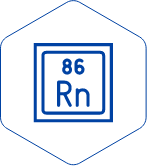Create a better indoor environment for you and your family and save on energy costs with smart and safe home improvements. Get rid of air pollutants and breathe better air with AirQ’s suite of offerings that improve the air quality of your home

THINK
Most of us would never drink a glass of dirty water, yet the air we breathe rarely gets scrutinized. Like water, air can be similarly polluted and negatively impact your health and quality of live.
The more we learn, the more the need for a professional approach to improving the air quality of all environments becomes evident. Having an annual home air quality analysis will soon become a common part of annual maintenance .
With Affordable AirQ, correcting unhealthy air quality in living environments is now possible. Our professional inspectors and team of Air Quality Experts are ready to correct and enhance your home’s air quality and most importantly, the health of your family.












Volatile organic compounds (VOCs) are chemicals found in paints and lacquers, paint strippers, cleaning supplies, varnishes and waxes, pesticides, building materials and furnishings, office equipment, moth repellents, air fresheners, and dry-cleaned clothing.
VOCs evaporate into the air when these products are used or sometimes even when they are stored. Volatile organic compounds irritate the eyes, nose and throat, and cause headaches, nausea, and damage to the liver, kidneys, and central nervous system. Some of them can cause cancer.

Asthma is a condition in which a person’s airways are inflamed, narrowed, and swell up producing extra mucus, which makes it difficult to breathe.
Airborne allergens, such as pollen, dust mites, mold spores, pet dander, or particles of cockroach waste are a primary cause of asthma.

Molds and mold spores are a ubiquitous, common component of household and workplace dust. However, when mold spores are present in large quantities, they can prove a health hazard to humans, causing allergic reactions and respiratory problems.
Some molds also produce mycotoxins that can pose serious health risks. Prolonged exposure to mycotoxins such as at home, in offices, etc, can cause severe neurological problems that may prove to be fatal.

The U.S. Clean Air Act expects the Environmental Protection Agency of the United States to set National Ambient Air Quality Standards for six common air pollutants. These toxins (known as “criteria pollutants”) are tracked down throughout the United States. They are particulate matter, ground-level ozone, carbon monoxide, sulfur dioxide, nitrogen dioxide, and lead.
These toxins can harm human health, and the climate, and cause property harm. Of the six toxins, molecule contamination and ground-level ozone are the broadest health threats. EPA refers to these six contaminations as “criteria” air pollutants since it manages them by creating limits that depend on human wellbeing and natural measures.

Combustion pollutants are the gases and particles made by burning any fuel, such as natural gas, wood, charcoal, tobacco, kerosene, etc. The major indoor combustion pollutants are carbon monoxide (CO), fine and ultrafine particles, nitrogen dioxide (NO2), polycyclic aromatic hydrocarbons (PAHs), and formaldehyde.
Incomplete combustion of hydrocarbons also results in carbon monoxide pollution that can be harmful to both the environment and people. If exposed at elevated levels, carbon monoxide can cause fatigue, headaches, and queasiness. If exposed at a very high level, it can cause brain and heart damage and even death. Other combustion pollutants can cause eye, nose, and throat irritation, as well as lung disease, cancer, and other serious health impacts.

Radon is a naturally-occurring radioactive gas that has its traces present in the atmosphere and can cause lung cancer.
Radon exposure occurs inside homes, schools, and workplaces. The gas gets trapped indoors through cracks and other holes in the foundation of a building and can increase your risk of lung cancer over time. Indoor radon can be controlled and managed with proven, cost-effective techniques.

At Affordable, we identify the harmful pollutants present in your house to come up with a plan of action and make your living space’s air quality clean and safe for you.
At Affordable, we aim to provide a safer environment by reducing the air pollutants present in your living/work space.
Our team of eminent technicians assure to eliminate the harmful air pollutants present in your living/work space.
Post our services, we assure to keep monitoring your property at regular intervals for any future infestations.
Take these steps to control indoor pollutants and improve your air quality and reduce your IAQ-related health risks:




Central air systems have filter capacity to trap dust and other pollutants. Use High Quality Electrostatically charged media filters and change regularly. These provide maximum filtration of the following
Most HVAC systems can accommodate MERV 13 filters without causing equipment problems. Using the system manufacturers highest recommended filter rating is preferred
Central air systems have filter capacity to trap dust and other pollutants. Use High Quality Electrostatically charged media filters and change regularly. These provide maximum filtration of the following
Most HVAC systems can accommodate MERV 13 filters without causing equipment problems. Using the system manufacturers highest recommended filter rating is preferred
Central air systems have filter capacity to trap dust and other pollutants. Use High Quality Electrostatically charged media filters and change regularly. These provide maximum filtration of the following
Most HVAC systems can accommodate MERV 13 filters without causing equipment problems. Using the system manufacturers highest recommended filter rating is preferred
Central air systems have filter capacity to trap dust and other pollutants. Use High Quality Electrostatically charged media filters and change regularly. These provide maximum filtration of the following
Most HVAC systems can accommodate MERV 13 filters without causing equipment problems. Using the system manufacturers highest recommended filter rating is preferred




While remodeling or improving the energy efficiency of your home, steps should be taken to minimize pollution from sources inside the home, either from new materials or from disturbing materials already in the home. In addition, residents should be alert to signs of inadequate ventilation, such as stuffy air, moisture condensation on cold surfaces, or mold and mildew growth.
While remodeling the energy efficiency of your commercial workspace, steps should be taken to minimize pollution from sources inside the property, either from new materials or from disturbing materials already in the home.